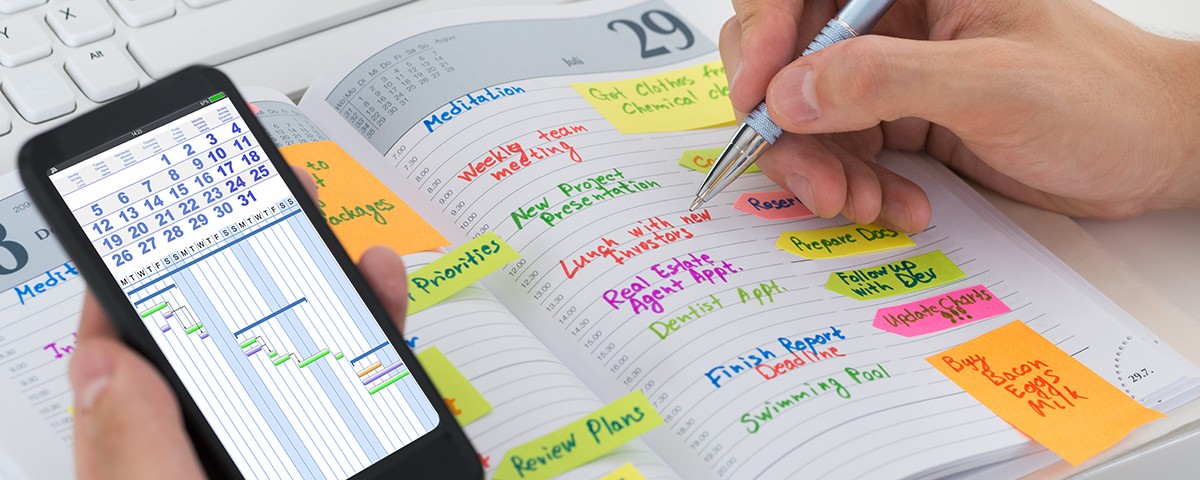Effective Gantt Charts: Reading Between the Lines

Change Control Keeps Expectations Clear
February 9, 2016
The Practicalities of Project Management
March 29, 2016Chances are, at some point or another, you’ve encountered a Gantt chart. These bar charts are great tools for graphically illustrating a project schedule and, done well, represent the end product of a series of good project management techniques.
A typical one of these project management charts depicts the tasks, major milestones, and duration of the project. Task names are shown in the first column, and sequential days, weeks, and months appear in the first row. Bars represent the start dates, continuation, and end dates of tasks, while milestones show the end date of the project as well as important accomplishments along the way. Because it’s graphical in nature, a Gantt chart makes it easy for people to see the sequential nature of tasks and when things will be completed.
You don’t need any special skills or even special software to put together one of these charts. It’s a simple diagram that anyone can create. But for that very reason, you have no way of knowing the rationale or validity of the dates being depicted. When it comes to what you see on a project management chart, “buyer beware.” You might need more information to know if it’s giving you a real-world view of the project.
Gantt Charting With Integrity
Start off on the right foot. If you’re the one creating the chart, follow these best practices to make sure your chart has integrity:
- Identify tasks using a work breakdown structure. All of those tasks lead to the development of the project’s intended deliverables.
- Base task duration on solid estimating techniques, considering factors like resources, percentage allocation assigned to the project, and non-work dates.
- Establish task sequencing using a network diagram with definitive dependencies, which means correctly documented and established dependencies where one task can’t start until another task finishes.
Required to produce a valid Gantt chart is a “dynamic model of the project.” No project follows the project management chart explicitly as stated, so the chart needs to be changeable, with the ability to readjust future tasks. In other words, as the name implies, the model you use to create the chart has to be dynamic.
Here’s a good example of why this is so important. We were working with a company that had been having problems with a project that had gone off track. This was a $20 million program, so the stakes were high. When we asked to see their schedule, the team led us from the cubicles to the break room and proudly showed us a beautifully designed, 4’ by 8’ Gantt chart.
“That’s our schedule,” they said.
“So when was it updated last?” I asked.
“No, that’s the schedule. We released it when we first started the project.”
It was a sleek chart. It looked impressive. But it wasn’t reflecting the reality of today. These charts have to be dynamic and changeable.
When to Use a Project Management Chart Template
Because it can be costly to create a chart from scratch, people will frequently use chart templates to make the process more efficient.
For projects that are very common, with common deliverables, tasks, dependencies, and other elements, templates make a lot of sense. Why spend time recreating the Gantt chart when the tasks, their durations, and sequencing are pretty much the same from project to project?
If you have projects that tend to be very similar in terms of tasks, durations, and milestones, start with a chart template, and then customize your final product based on the project’s uniqueness.
Don’t Be Fooled by That Beautiful Chart
Next time you’re given or presented a chart, whether you’re a stakeholder, a manager of project managers, the project’s sponsor, or have a strong vested interest in the project, do your due diligence:
- Don’t take it at face value.
- Consider its integrity.
- Ask questions to uncover how the Gantt chart was created: Did you use a tool? Does this include all the deliverables? How often do you update it? Do you have a network diagram?
- Assign a level of integrity from A-F and respond to it accordingly.
With this, you will be more able to track your project and all its moving parts, helping to keep you on time and under budget. Learn what else you can do to improve your projects with our suite of project management training courses.


